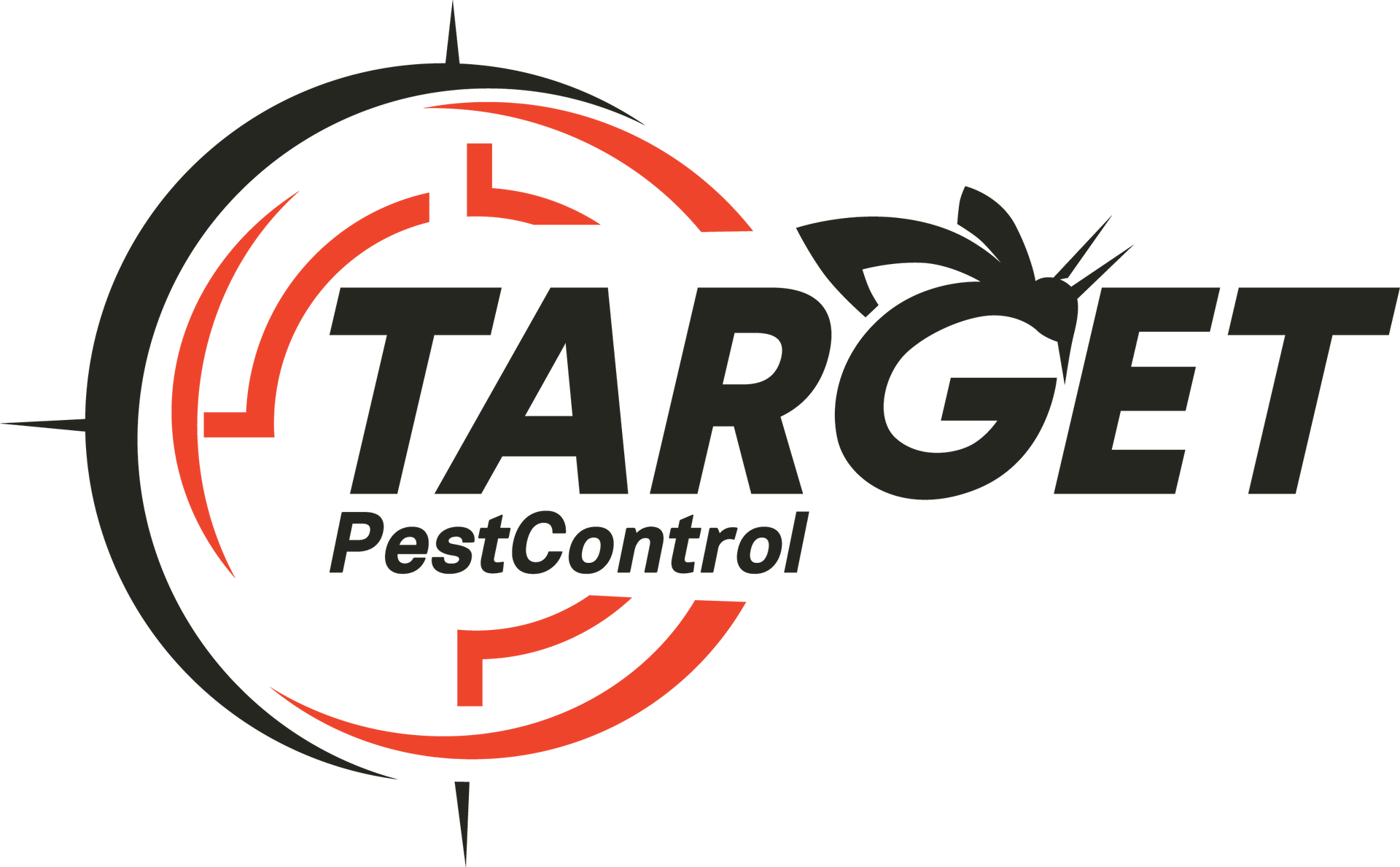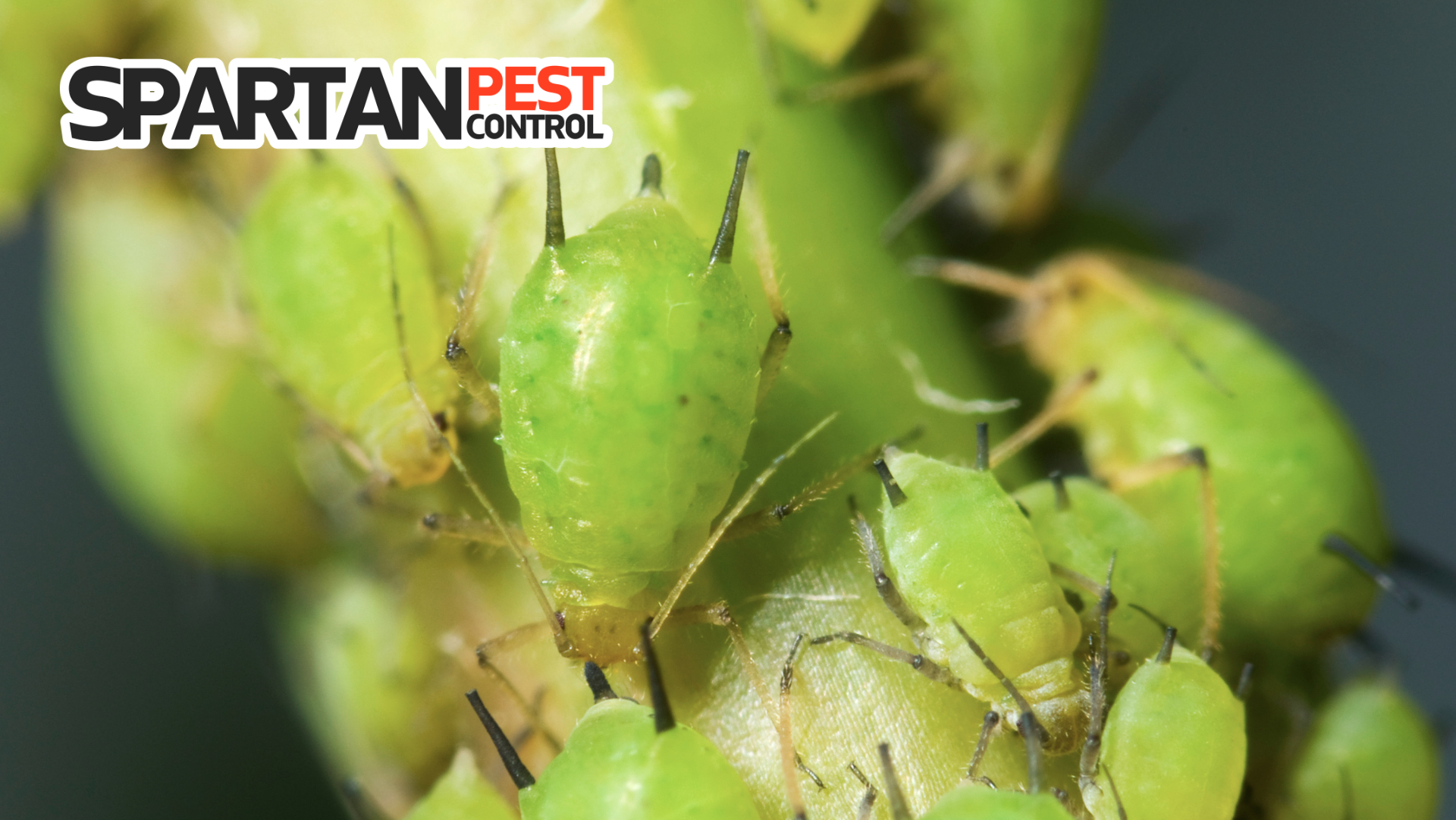My name is John Target, owner and operator of Target Pest Control. We are located in Calgary, Alberta and I have over 18 years of experience in the industry.
Get In Touch!
Phone Number:
Email Us:
Phone Number:
Send An Email:
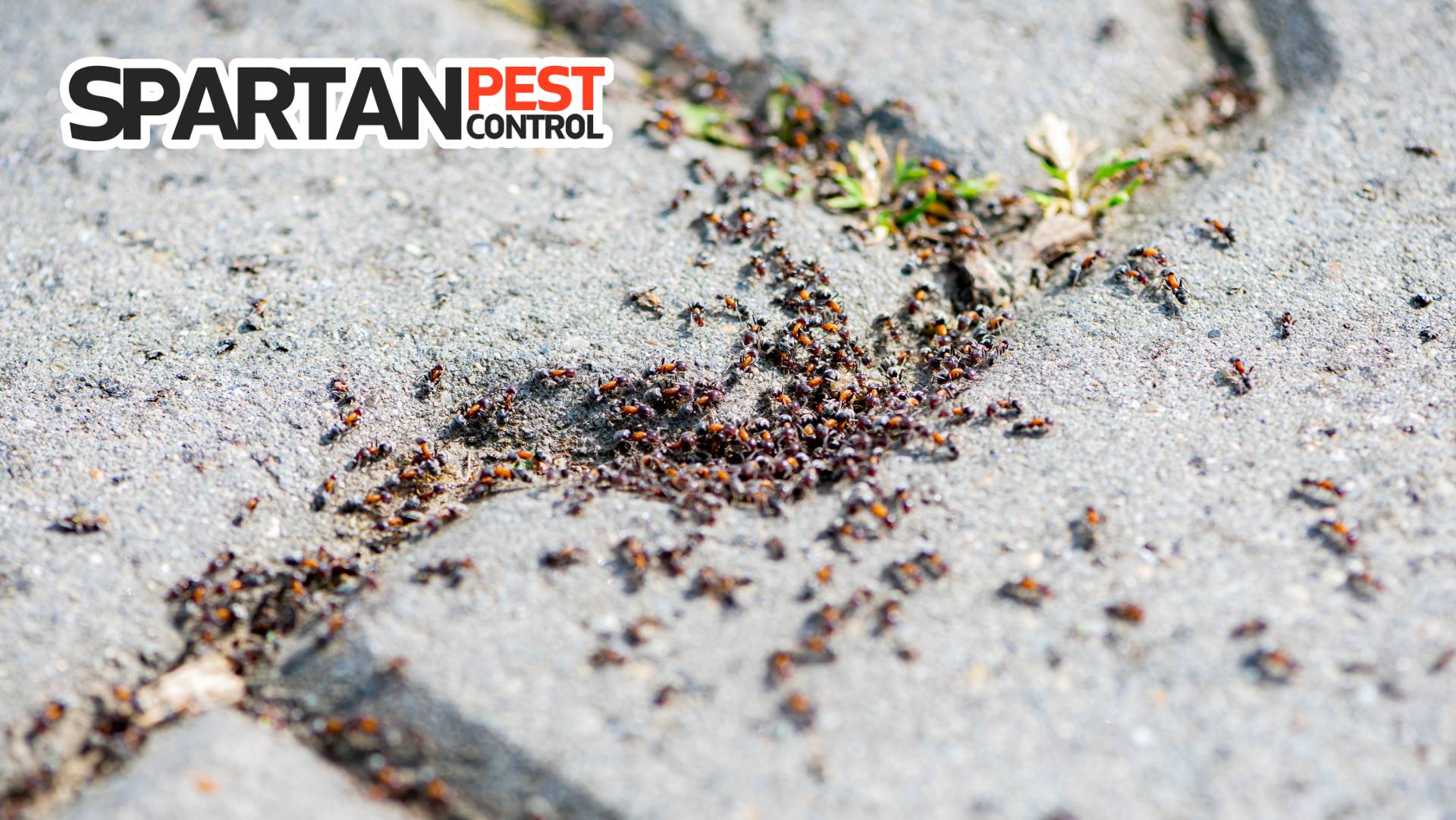
What are Pavement Ants?
Pavement ants are a common pest in North America. Scientifically named tetramorium caespitum, they are also called sugar ants after their preference for sweet foods. They are an invasive species brought to Canada from Europe in the early 1800’s. They are frequently found in urban areas and are considered the primary nuisance species in Canada.
What Do Pavement Ants Look Like?
Pavement ants are medium sized ants at 2.5 to 3 mm long. They are pale brown to black and are held together by a tough exoskeleton. This exoskeleton takes the place of an internal skeleton. It holds the body together and protects the ants. Ants are comprised of three parts: the head, thorax, and abdomen. The head is the first segment of their body and contains two bent antennae and two compound eyes. There are ten segments on each antenna. The final segment is thick and blunt. They have strong mandibles, or mouths that can carry things, dig, and cut. The second segment is called the thorax and contains their six legs, each with a claw at the end. The first pair of legs is used to clean the head as well as walk. At the end of their thorax, they have two pointed spines. Their abdomen is the final segment and holds their internal organs. It is separated from the thorax by two bumps called nodes. The abdomen also contains their stinger.
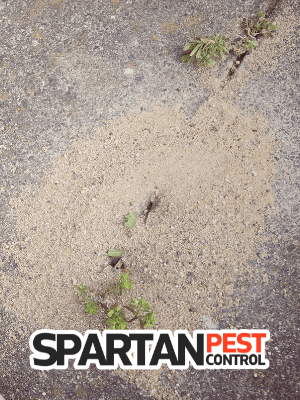
Where Do Pavement Ants Live?
Pavement ants are native to Europe but were brought to Canada in the early 1800’s. They prefer areas with little vegetation and have become acclimated to urban areas. They frequently live on or near pavement. They build nests in the cracks of roads, foundations, and sidewalks. Indoors, they live in places that provide for their basic needs of food, water, and shelter. This often includes near plumbing, in insulation, and around baseboards. Sometimes, they will nest outside a home but travel inside to collect food.
What Do Pavement Ants Eat?
Pavement ants are not picky eaters. However, they do prefer sweets above other foods. They frequently eat fruit, jam, honey, popsicles, juice, and other man-man food. They will also consume insects, greasy food, and seeds. They are known to cultivate a relationship with aphids where they will farm them for the honeydew they secrete. They are also cannibalistic and will eat dead ants of any kind.
How Fast Do Pavement Ants Reproduce?
Pavement ant mating begins with a nuptial flight where winged males and virgin queens fly. The queens release pheromones to attract the males. Once the male has mated, he dies, and the queen will store his sperm, often for the rest of her life. Each nest usually has one queen and a few virgin queens. After mating, the virgin queen will leave to build her own nest. This usually occurs in the July or August. Established queens will return to their colony after mating. The young queen creates the nest herself before laying the eggs. She will care for them until they are grown. The queen ant survives off of stored proteins during this time that she has accumulated months prior.
Ants go through three stages of life to reach adulthood. They begin as small, white eggs and hatch. They hatch as small eyeless and legless larvae. Then, they will eat nearly constantly and molt multiple times to grow. Once they have grown sufficiently, they metamorphose into pupa. Pupa are similar to adults but their legs, antennae, and wings, if they have them, are tightly folded against their bodies. After a number of days, they emerge as adults. Pavement ant development from egg to adult takes two to three months.
Once the first generation of eggs become adults, they will care for the queen and future eggs. In established colonies, the workers care for the eggs, larvae, and queen. In the colony, the queens only job is to produce more eggs. These eggs are moved frequently to protect them from predators and temperature changes. In winter, Pavement ants will hibernate, often in areas such as under steps or even indoors. A single queen can lay up to 800 eggs per day and will continue to reproduce for the duration of her lifetime.
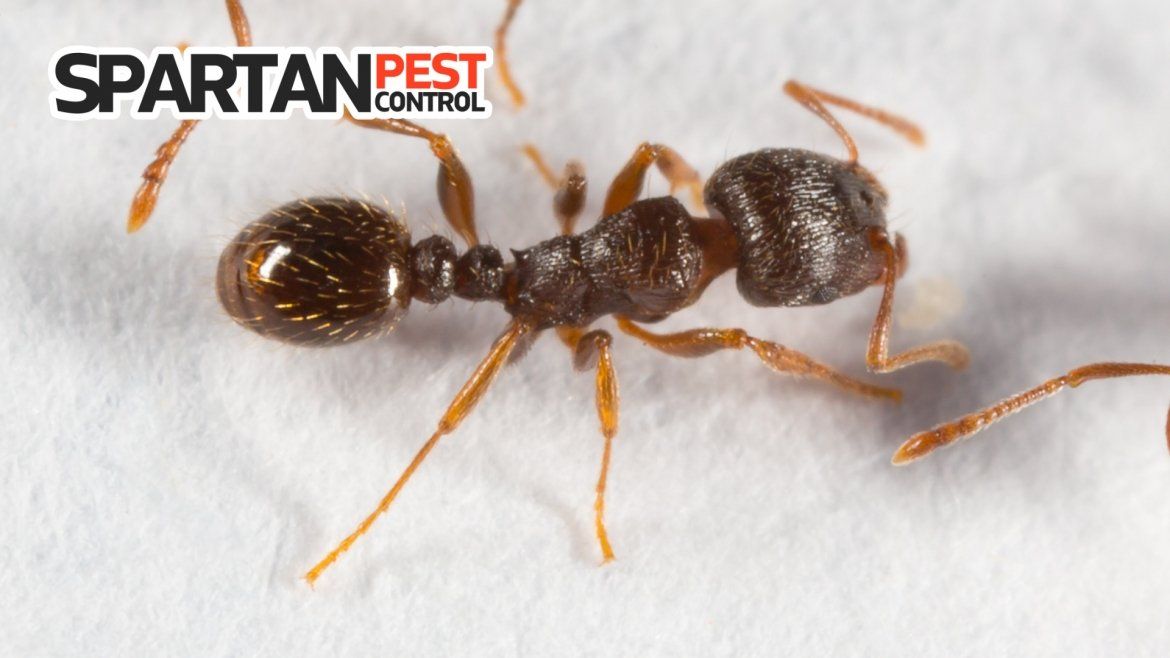
What are the Signs of a Pavement Ant Infestation?
Pavement ants are small but they can leave clear signs of their presence in the shape of anthills. Anthills are small mounds of dry dirt around the entrances and exists of their nests. These hills are found near pavement, often around the gaps between sidewalk slabs or cracks in pavement. They look like small piles of grey-ish dirt.
The other sign of an infestation is visibly seeing ants. Worker ants constantly move to and from their nest to get food and water. They will follow the same path each time because of pheromones that can easily be followed back to their nest. Indoors, they will often be found in kitchens gathering crumbs or spilled foods. The nest may be indoors or outdoors depending on where the nearest food sources are.
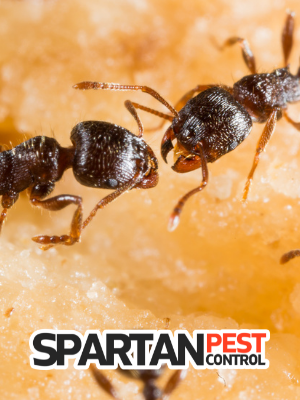
What Causes a Pavement Ant Infestation?
The primary cause of an indoor pavement ant infestation is unsanitary conditions. Ants are attracted to indoor spaces by easily accessible food and water. Food crumbs, pet food, and spills will attract them, especially sweets. Dirty dishes or trash will also provide an easy food source. Initially, a few worker ants will enter the home hunting for food. If enough food is present, they will make a nest in or near the home. Keeping a tidy home will go a long way in preventing an infestation.
Another cause of a Pavement ant infestation are entry points. Cracks in the foundation, holes in window screens, and open windows without screens will allow ants access to your home. They may also come in on your clothing or pets.
What Problems Do Pavement Ants Cause?
Pavement ants can bite and sting, but they lack any venom. Their bites and stings will hurt but will not cause any significant damage. Simply put some antibiotic ointment on any painful bites. While they are not venomous, ant bites can cause an allergic reaction in some individuals. The biggest problem with ants is that they can carry bacteria such as Salmonella and E. coli. As they walk across the floor, counters, and food, Pavement ants can deposit small amounts of bacteria, fungi, and fecal material. As humans, may can then ingest this bacteria or fecal material when we prep food on our contaminated countertops or consume contaminated food.
Salmonellosis, caused by the Salmonella bacterium, is the most common illness. It is an intestinal disease that causes mild to severe symptoms. In healthy individuals, it causes mild cramping, diarrhea, and a slight fever. Some people have no symptoms. In those with weakened immune systems such as the elderly, the symptoms are more severe. They include nausea, vomiting, cramping, diarrhea, fever, chills, and headache. The vomiting and diarrhea can cause severed dehydration and can last up to ten days. IV fluids may be necessary in severe cases. It’s important to contact your local doctor if you think you may have Salmonellosis.
E. coli is group of bacteria, that can cause serious intestinal problems. The main symptoms are cramps and diarrhea. In those with weakened immune systems and in more serious strains, symptoms include severe cramping, vomiting, stomach pain, and bloody diarrhea. In serious cases, hospitalization may be necessary.
How Do You Treat a Pavement Ant Infestation?
There are many different methods used to combat a pavement ant infestation including a combination of insecticides and simple water. The methods used depend on the location and extent of the infestation. The simplest treatment is done by a professional pest control company using commercial grade chemicals. These pesticides can be used indoors to kill worker ants who venture into your home and also leave a residual for long-term effects. They should be sprayed around entry points such as windows, doors, and baseboards. While effective, they kill on contact but will likely not kill the queen. However, they will effectively stop a new infestation from occurring and work well for regular maintenance. It’s important that when applying any pesticides, to follow the label correctly according to provincial law.
Insecticides can also be used outdoors to eliminate the nests. DIY methods include borax mixed with sugar or honey. The borax acid is toxic while the sugar or honey lures them in. Ideally, they will bring this mixture to the queen and kill the colony from the inside out. Killing the queen is the only way to truly eliminate a nest. Place the mixture in a low container near the ant hill within 1 to 2 feet. Be careful though to keep it away from pets and children. Commercial insecticide in cans often comes as a foam application. The foam can then be sprayed directly into the anthill using a long straw. It may take repeated applications to kill them if the nest isnt hit directly. Insecticides are best applied in the morning or early afternoon when warmest.
How Do You Prevent a Pavement Ant Infestation?
Pavement ant prevention consists of two main principles: home maintenance and cleanliness. Home maintenance includes closing any entry points in the home. The main entry points are window screens, doors, and cracks in the foundation. Fix or replace any holes in window and door screens and make sure that there are no gaps in doorways or windows. Fill any cracks in the foundation of your home.
The second way to prevent ants is to keep your home tidy. Regular sweeping, mopping, and vacuuming will reduce the number of crumbs available to ants. Also make sure to quickly wipe up spills and don’t leave dirty dishes around. Keep food in tightly sealed containers.
Finally, make sure that your yard is clean. Like indoors, do not leave crumbs or spilled food around. Place garbage in secured bins or bags. Trim back trees to prevent ants from using them as bridges to the home. For more information on controlling Pavement ants, check out our ant treatments for details.
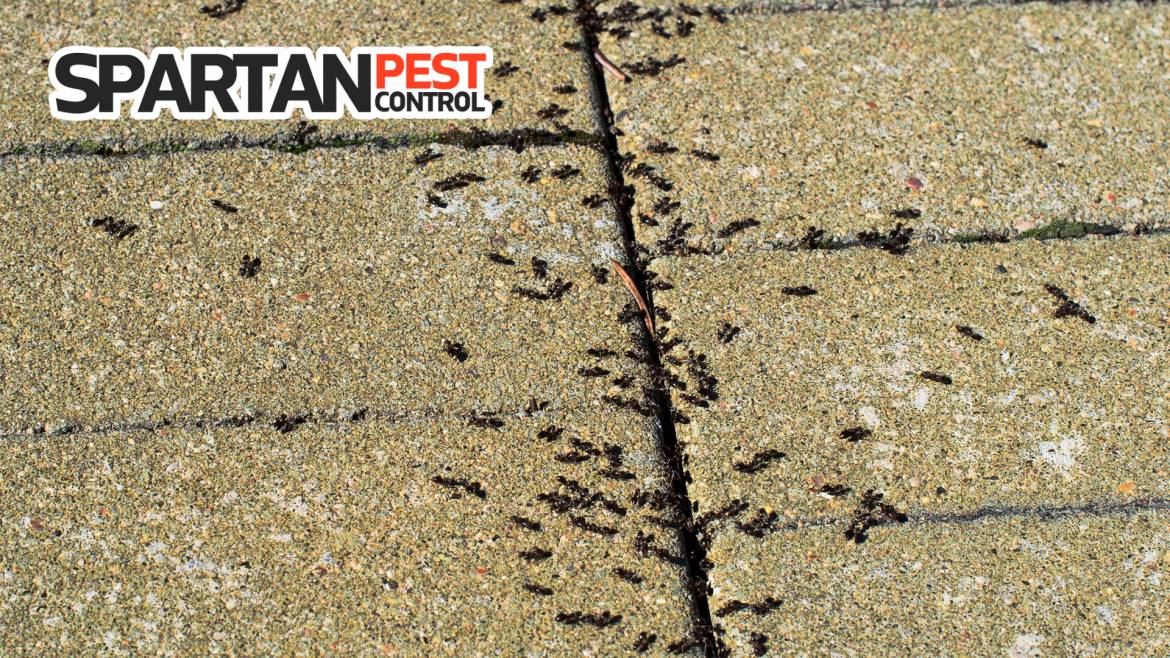
Facts About Pavement Ants
1. Most Pavement ants are female
Male ants only exist to fertilize the queen. They will die soon after they complete this task after their nuptial flights.
2. Pavement ants are commensal pests
Being a commensal pest means that they eat the same things that humans eat. Pavement ants will often live in urban areas and in homes where food is abundant.
3. Pavement ant colonies are huge, like really big!
Each Pavement ant colony can contain between 300,000 and 500,000 individuals if left alone to mate, forage, and grow. It’s common to find Pavement ants on the exterior, however if you find a nest on the interior it’s best to eliminate them before the next becomes larger.
4. Ants are heavy lifters
Pavement ants can carry around 3x their body weight over large distances. In contrast, an untrained human can only deadlift their body weight. They cannot carry it over any distance and would struggle with more weight added.
About Author
John Target - Owner & Operator
My name is John, owner of Target Pest Control. We are now located in Calgary, Alberta and have been providing pest control solutions on the east coast since 2008. I have over 18 years experience in the industry and enjoy the everyday problem solving this industry offers.
You May Also Like

AUTHOR

RECENT POSTS

© Copyright 2024 | All Rights Reserved | Web Design & SEO by Purple Penguin Media

